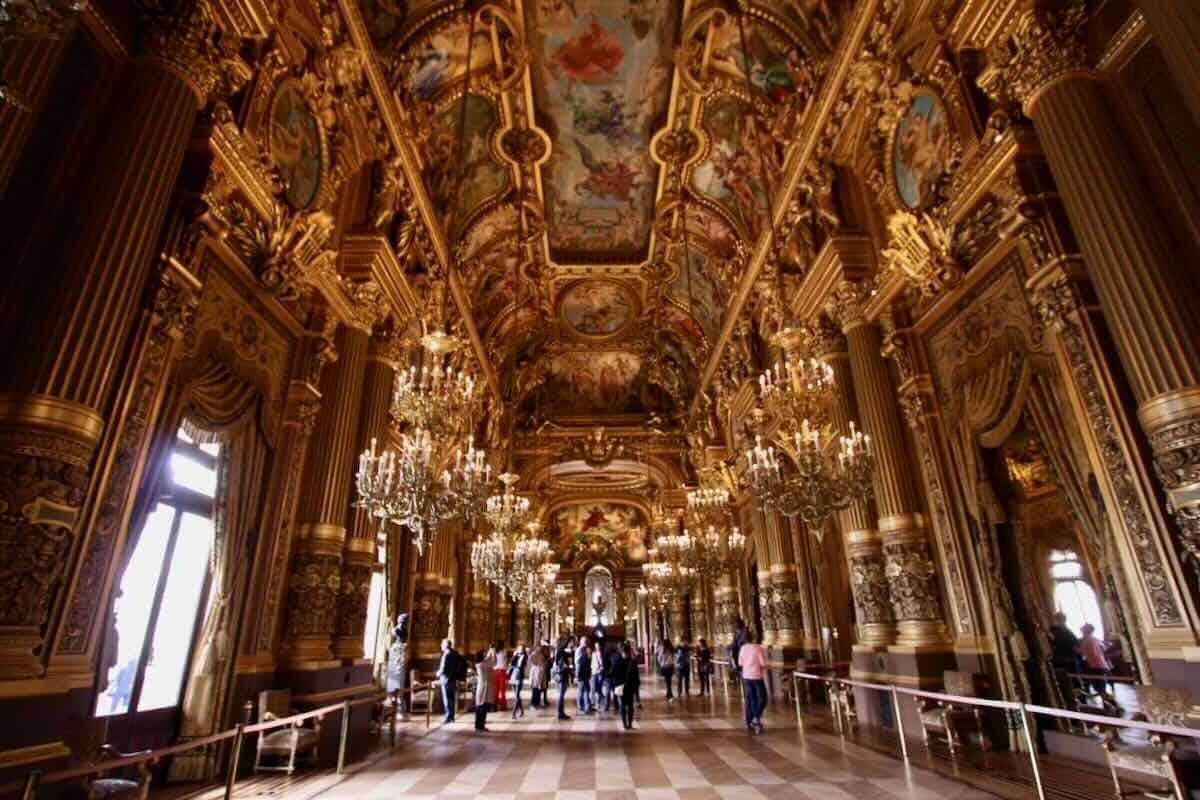Table Of Content

Thereafter, I satisfied myself with admiring the impressive facade of what may be the world’s most famous opera house, as I strolled past it in the 9th arrondissement. The audience sits centered around a hanging chandelier, weighing over six tons, and the large stage was built to accommodate up to 450 artists. It is opulently decorated with marble friezes, columns, and statuary, many of which are used to portray deities from Greek mythology. Although the design of the building seemed to be just what Emperor Napolean III had in mind, the setbacks and natural disasters were not what the builders needed.
La Clemenza di Tito - Paris national Opera hous...
The Palais Garnier is one of many monuments dedicated to Paris’ rich art history. It’s Second Empire architecture captivates tourists and locals alike. The Opéra Garnier teamed up with Google Cultural Institute to provide an in-depth look at all the building has to offer, so opera-lovers can take the tour from anywhere in the world.
Visit the Palais Garnier
Airbnb offers 'Phantom of the Opera'-themed stay at Palais Garnier in Paris - Reuters
Airbnb offers 'Phantom of the Opera'-themed stay at Palais Garnier in Paris.
Posted: Mon, 13 Feb 2023 08:00:00 GMT [source]
If you’re thinking that it’s just all too much, remember that opera itself a florid overwrought affair. In 1969, the theatre was given new electrical facilities and, during 1978, part of the original Foyer de la Danse was converted into new rehearsal space for the Ballet company by the architect Jean-Loup Roubert. This consisted of modernizing the stage machinery and electrical facilities, while restoring and preserving the opulent décor, as well as strengthening the structure and foundation of the building. On the third attempt to introduce it since 1875, a restaurant was opened on the eastern side of the building in 2011. L'Opéra Restaurant was designed by French architect Odile Decq.
Individual self-guided visits – information
We invite you to arrive 30 minutes before the beginning of the tour. Once you have entered the building, the meeting point with your guide is located at the Rotonde des Abonnés. Please present your voucher to the guide upon your arrival. The architecture and location of the Palais Garnier are intertwined with the history of France and Paris (and a famous phantom). Swathed in gold, you can strain your ears to hear echos of the Phantom of the Opera.
The stage is the largest in Europe and can accommodate as many as 450 artists. The canvas house curtain was painted to represent a draped curtain, complete with tassels and braid. The interior consists of interweaving corridors, stairwells, alcoves and landings, allowing the movement of large numbers of people and space for socialising during intermission. Rich with velvet, gold leaf, and cherubim and nymphs, the interior is characteristic of Baroque sumptuousness. Beyond the Rotonde des Abonnés, the Bassin de la Pythia leads to the Grand Escalier with its magnificent thirty-meter-high vault. Built of marble of various colours, it is home to the double staircase leading to the foyers and the various floors of the theatre.
The Opera Garnier Guided Tour
In any event, for purposes of this article, I want to explain how historical events at the Opera Garnier inspired Leroux’s 1910 potboiler. His fantasy novel is an ingenious blending of fact and fiction, with the Paris Opera as a star character. The point, of course, was to be seen by others, not to have the most ideal view of the performance. The most expensive seats are the boudoir-like boxes, though they have a slightly obstructed view of the stage. The curtain is actually made of canvas, but contrived to appear like draping velvet. The stage featured many luminaries, including opera star Maris Callas and dancer Rudolf Nureyev.
"Perpetual Music" Concert - Rolando Villazón (2...
If you look closely, you’ll see that the ceiling is an homage to music. It features 14 composers from different musical periods, musical instruments, and Paris’ signature buildings. Some thought it was garish and would clash with the opera’s Second Empire decor. Garnier also selected and guided the work of collaborating artists, many of whom were prestigious grand prize winners. In total, there were 15 principal artists, 75 sculptors, and myriad artisans who slaved away on the Opera Garnier.
One the eastern side is the Emperor’s Pavilion, the only non-symmetrical part of the building. This was the entrance for Napoleon and wealthy season ticket holders. Right then and there, Napoleon resolved to build a new opera house that he could safely attend. You can experience the incredibly opulent palace space, designed by Charles Garnier.

This incident inspired Gaston Leroux in the original writing of the play, as did the underground lake and cellars. As impressive as the Palais Garnier was on the outside, I was pretty disappointed with the inside! The Palais Garnier is quite expensive to enter and once inside, you see a lot of ornate decorations, but the entry fee simply wasn’t worth it in my opinion! They don’t even let you inside the actual opera house auditorium! The view is not by any means higher than the surrounding roofs, but you can see a nice long line of Haussmannian buildings. The facade is ornamented with seven archways, each decorated with two marble columns, sculpted statues, and a pair of gold statues.
Welcome to The Geographical Cure, my travel and culture blog. I believe in the salutary and magical effects of a temporary geographical cure and have been running away from real life to seek treatment for years. Although the Christine-Phantom romance is fantasy, the characters of Erik and Christine may be based on actual people. The Paris Opera chandelier is also featured in Leroux’s novel.
Fortunately, there’s no need to watch a show to take in all of the Palais Garnier’s glamour. You can opt for a guided or self-guided tour of the Opéra. Group tours happen daily starting at 10 a.m., with the last tour at 5 p.m. Individual tours are offered in the afternoon in both English and French. It’s the perfect backdrop for the Garnier-designed 7 ton bronze and crystal chandelier.
It has been listed as a historical monument since 1923. This means “grand stairway,” and it certainly is a fitting name. The marble double staircase, with various chandeliers lighting the way up each step, leads to different floors of the opera house. And what about that connection to the Phantom of the Opera connection? The famous play is based on none other than the Opéra Garnier in Paris. The famous tale of a haunting love triangle was a hit on Broadway and in England.

No comments:
Post a Comment